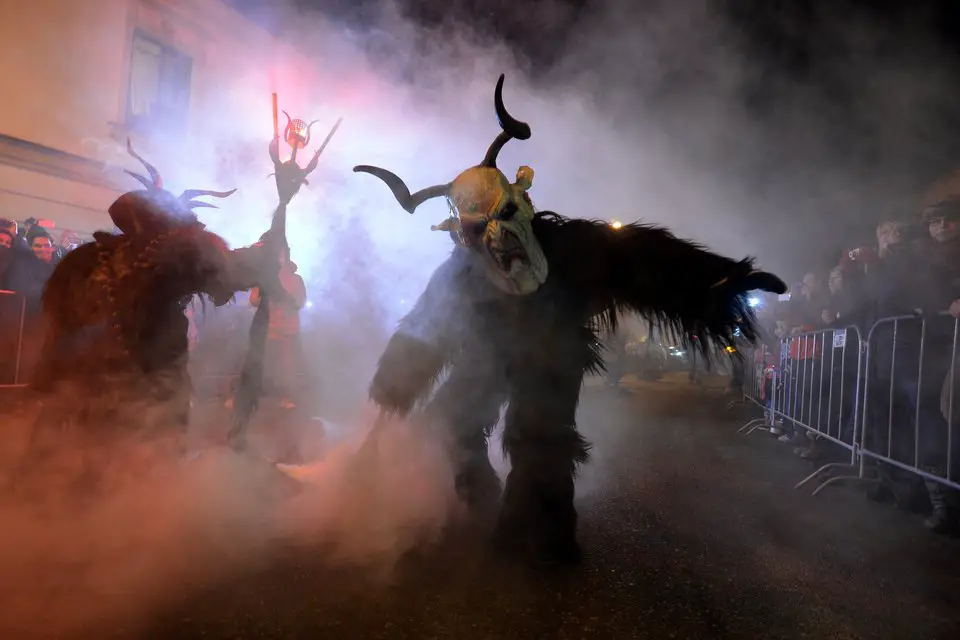Vele mensen hebben er nog nooit van gehoord, maar er is een schaduw Kerstman, of een slechte Kerstman als je het zo wilt noemen. De Nemesis van de Kerstman heet Krampus.
In het stadje Kaplice in Tsjechië heeft deze monsterachtige kerstfiguur zelfs zijn eigen parade. In de Angelsaksische landen is hij bekender daar heeft men wel meer varianten van stoute Kerstmannen zoals “The Grinch”. In Tsjechië is hij ook een belangrijke hoofdrol speler in de sagen, legendes en mythologie.

Tijdens de parade zijn vele mensen vermomd als Krampus met bizarre, bijna duivelachtige kostuums gemaakt van geitenvellen, en grote koebellen rond het middel hangende.
Krampus is eigenlijk afkomstig uit oud Duitse mythologie en was een heidense afgod. Hij zou oorspronkelijk een van de zonen van Hel zijn, de Noorse god van de onderwereld (niet te verwarren met ‘de Hel’).
Krampus komt op de avond van 5 december, hij zou zelfs samen met de Kerstman huizen bezoeken. Zijn afdeling is het straffen van stoute kinderen.
De Kerstman horror-edition doet wel bangelijk aan.
Foto’s: Matej Divizna/Getty Images)










